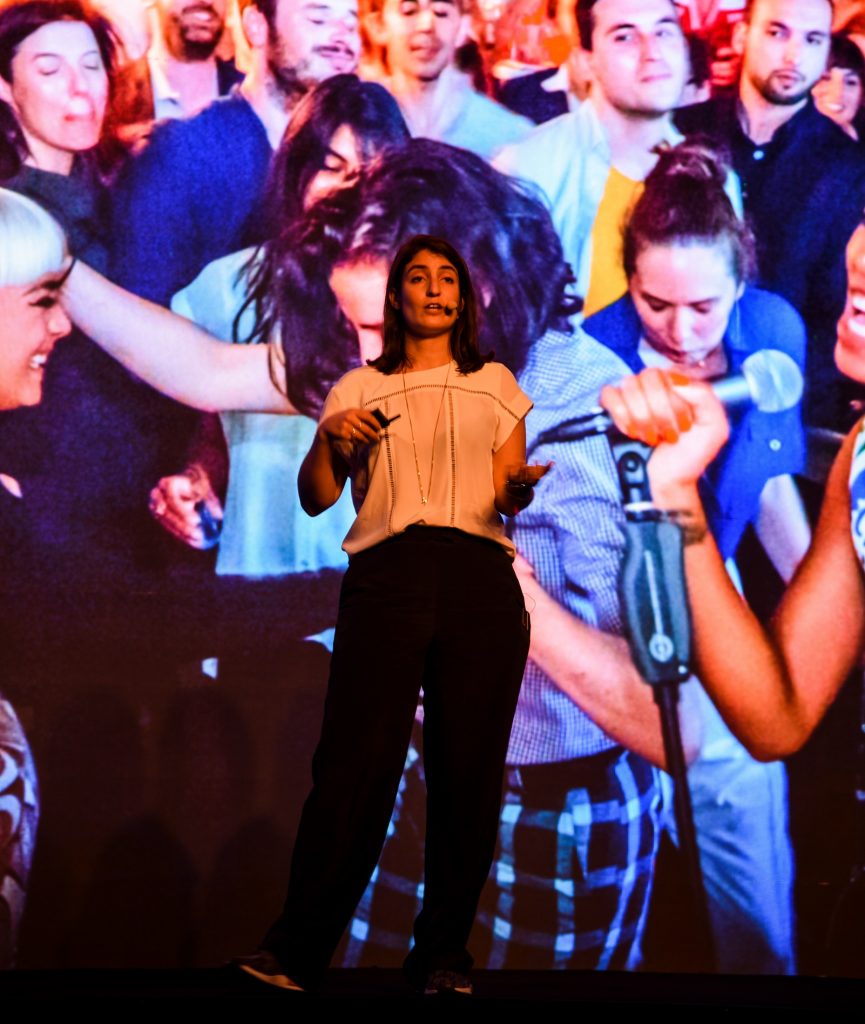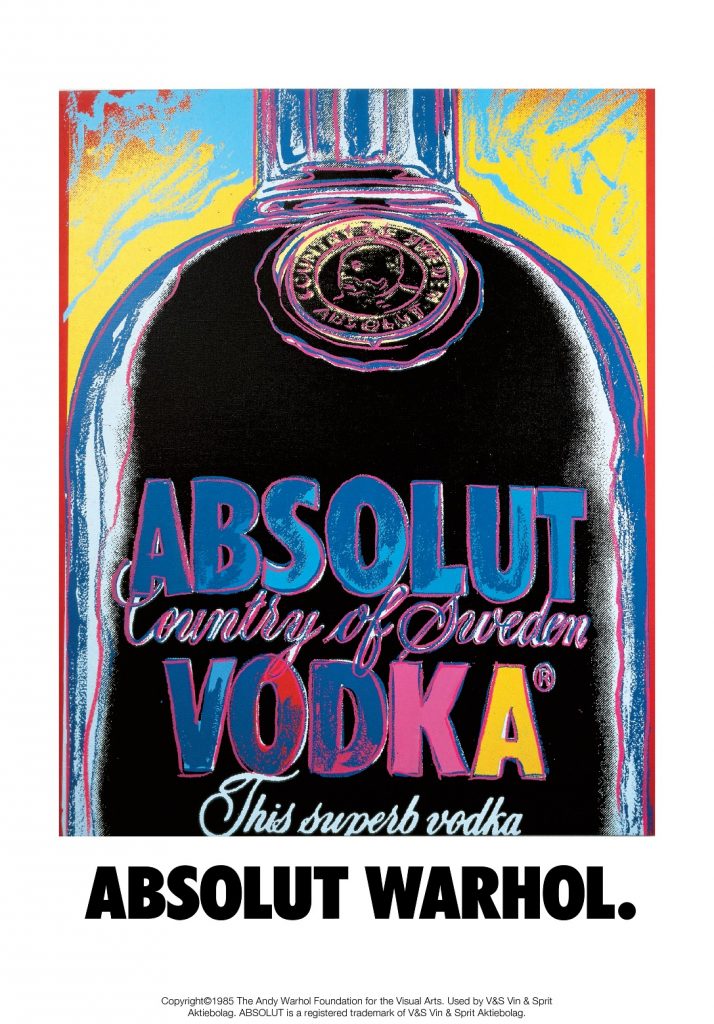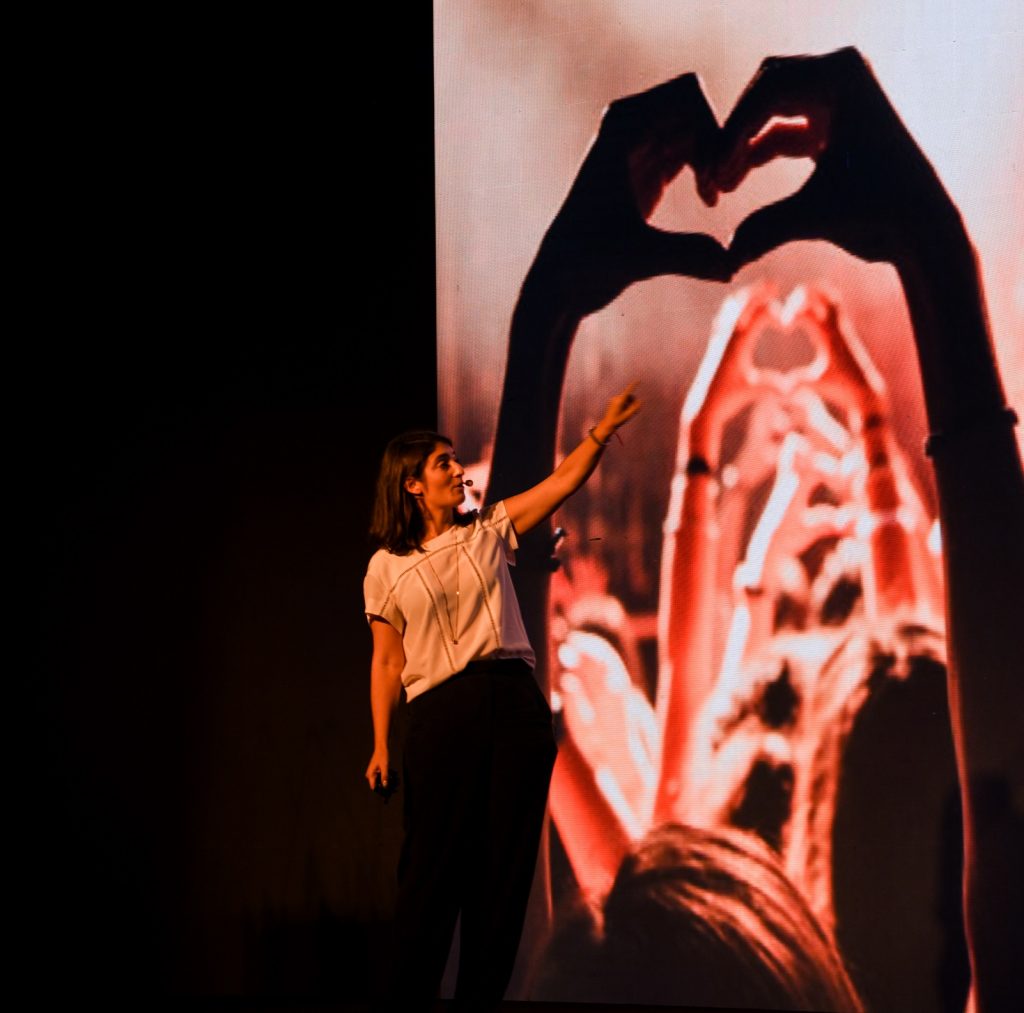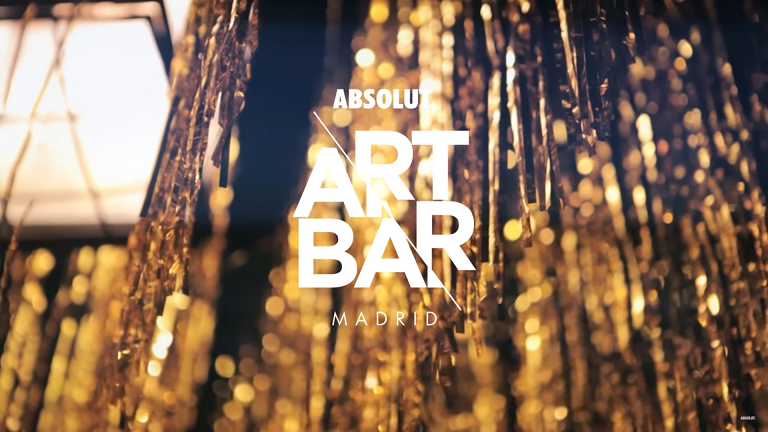Art and artists are becoming increasingly significant elements of advertising. Whether it is by creating visually appealing products or employing the skills of artists themselves to gain immediate consumer attention – brands like Apple, Coca-Cola, Louis Vuitton, among many others, are incorporating art as part of their marketing campaigns. One of the oldest examples of “art meets marketing” has to be the thirty year collaboration between Absolut Vodka’s print advertising and artists such as Andy Warhol, Francesco Clemente, Louise Bourgeois and Keith Haring. Absolut’s ad campaign also had artists presenting their own, unrestricted interpretation of the Absolut bottle. At Designyatra 2017, Ritwika Gupta caught up with Saskia Neuman, Global Art Manager at Absolut. Saskia spoke about how the Absolut Vodka bottle has stood out for its shape and the Absolut art bars have proven to be beneficial for both the brand and the artist. According to her, it is important to provide an experience that extends beyond the brand itself.

Both art and marketing are communication vehicles. But how do you think art influences marketing and vice versa?
I think every brand that communicates to a large audience or a public audience, of course, needs to incorporate art and design in basic things like logo and packaging. I think that art and design play an important role in how brands communicate, their visual identity, the roles they play within society and how they communicate these roles.
Aside from creating one of the leading international vodkas, Absolut is a major supporter of art. As a brand, why is this an important aspect for Absolut to focus on?
As a brand, we always had a very clear idea of who we are and what we stand for – in terms of equal rights, gender equality, being environmentally sound and friendly. We have always been transparent in our production but we have always chosen to express these values through artistic means. One thing brands can learn from the art and design industry is fluidity. In our ads, there has always been this constant element of surprise and change. This has led to anticipation with each and every new campaign. In all our print advertisements from the 80s and 90s, we have collaborated with artists like Rosemarie Trockel, Keith Haring and Damien Hirst. Our first creative collaboration was in fact with Andy Warhol in 1986. It was actually a marketer named Michel Roux, who was at that time, in charge of marketing Absolut to the US market. He was also someone who had a keen interest in art, culture and music. Roux knew Warhol and approached him. And that is how our creative collaboration sort of had a jumpstart. Once Warhol got invested in the brand, other artists followed. This led to many other collaborations with musicians such as Lenny Kravitz and famous fashion designers like Marc Jacobs, Jean Paul Gaultier.

Spirits and liquors are an area where presentation really needs to reflect the product. How important is the design and artwork of products in marketing?
We have always been proud of, not just our bottle’s content but also our bottle’s silhouette and what it looks like. That has played a crucial role and helped our products to stand out. When Absolut came in 1979, all the vodkas came in these different longer bottles. They were all frosted and had paper on them. At that point, no one had ever seen a rather clear and thick glass bottle, at least not in the vodka category. That is exactly how we stood out – our bottle and the bottle silhouette. One of the key successes to how we brand ourselves lies in how we have focused on our product packaging.

You have also initiated and set up Absolut Art Bars around the globe. How significant are they as marketing tools?
Art bars are great marketing tools because we are partnering with an artist, which is true to our heritage, and at the same time allowing people to experience our products without force feeding anything. These art bars allow us to create a narrative in which people can enjoy our products and also enjoy what we stand for – inclusivity, openness and freedom of expression. Like our print ads, our art bars have a new and different artistic impression in different cities. I think most of us here like to enjoy a cocktail, party and hang out. So, these art bars attract a lot of people and invite a lot of footfalls.

Do they help in the overall consumer experience?
They have proven to be very effective in darker markets, and in markets like Sweden or France where you cannot necessarily advertise in the traditional way. In Paris, for instance, we had a long standing relationship with Palais de Tokyo, where we did small art bars within a museum space. So, I feel it is not about pushing branding into people’s eyes. Ultimately, the idea is to create an environment for people where they feel inclusive, an environment where people feel they are a part of something and they can enjoy themselves. We are after all in the business of celebration and bringing people together.

But how relevant are such experiential bar concepts in the age of digital marketing?
We can always communicate what we want to and what we are doing through online platforms like Instagram and Snapchat etc but without a real touch point, even if it is just one night, once in a while, I think you lose a sense of what any brand is about. I think it is very important for any brand to make yourself available to the consumer. So if we want to show people what we stand for, we cannot just only talk about it. We have to also do it. We are not just about saying but also doing. It is really about putting your mouth where your purpose is.
Do you think the future of marketing is art and design? Will it generate good economics?
I think the commercial aspect of any creative field is important. I think brands should have more support for the arts, artists, creative expression and design. Our art bars have given artists the platform to do just that. They have the free range to do whatever they want. At the same time, one constant thing about these art bars is Absolut and you’ll find our cocktails there. So, it is beneficial for the artists, as well as, us. There are some brands who are already doing that and I feel there should be more of that.